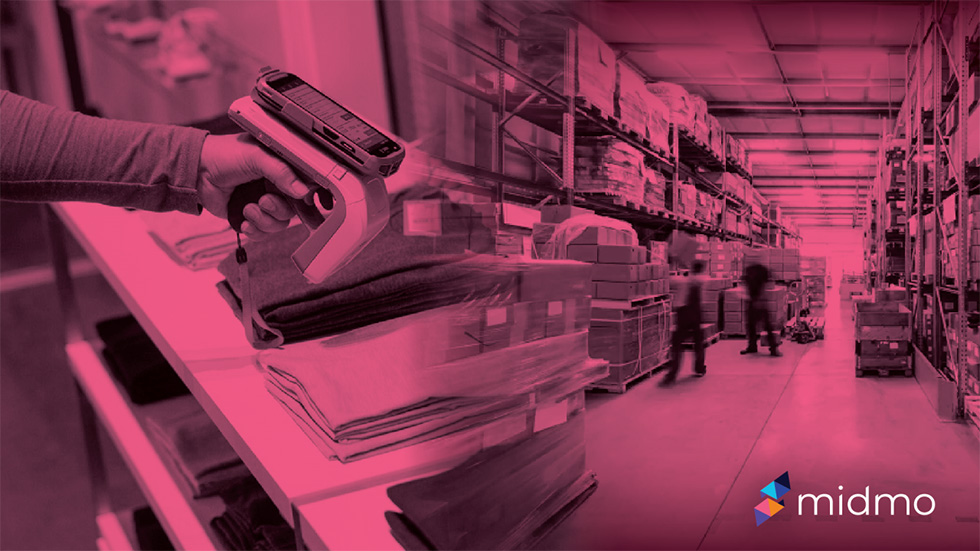With the retail sector charging into 2024, the looming NRF: Retail’s Big Show, Jan. 14-16 in New York City’s Javits Center anticipates a stage set for an innovation and transformation showcase. Amidst this backdrop, Identification and Automation is the overarching focus, while RFID (Radio-frequency identification) technology takes center stage. The adoption of Radio-frequency identification (RFID) technology is rapidly becoming indispensable for retailers, offering substantial cost savings and opening avenues for newfound revenue streams.
Picture this: as you browse through an aisle, a product you pick up instantly provides a digital discount coupon for your next purchase. Or imagine exploring a dressing room where the mirror suggests various matching items or styles based on the garment you’re trying. These transformative customer interactions, enabled by RFID technology, are surprisingly cost-effective.
Across various industries, RFID technology has been a catalyst for innovation and operational efficiency, offering invaluable lessons that retail can now leverage. Sectors like logistics and healthcare have pioneered RFID applications, demonstrating its prowess in supply chain optimization, inventory management, and asset tracking. The logistics realm, for instance, has utilized RFID for real-time tracking of shipments, reducing errors and enhancing visibility. Similarly, healthcare has harnessed RFID for patient care, ensuring accurate medication administration and equipment tracking. Retail stands poised to glean insights from these industries, adopting proven RFID strategies to streamline inventory, enhance customer experiences, and fortify security measures, ultimately redefining how businesses engage with customers and manage operations.
While RFID has been on the cusp of retail innovation for the past decade, recent advancements are pushing its boundaries, compelling manufacturers and retailers to take decisive action. The hunger for data to fine-tune business operations has intensified, and RFID emerges (again) as a game-changer, providing a fresh stream of data encompassing in-store dynamics, product movement, and customer behavior. Companies yet to explore RFID are falling behind in the market, while early adopters continue to unearth new capabilities, unlocking RFID’s full potential.
RFID functions through electromagnetic fields to identify and trace tags attached to items. These tags, equipped with processors and antennas, come in active (battery-powered) or passive (reader-powered) forms, with handheld or stationary readers varying in size and strength based on their utility.
Let’s explore a few actionable use cases of RFID in retail:
- Store-Level Inventory Enhancement:• Achieve inventory accuracy nearing 98%, akin to warehouses, leveraging RFID technology. This revolutionizes the historically manual and time-consuming inventory processes, driving a potential 1% sales increase for every 3% enhancement in inventory precision.Streamline receiving processes with instantaneous and accurate inventory entries, eliminating the need for tedious carton and item scanning or blind receipts. • Expedite cycle counts without line-of-sight requirements, enhancing accuracy and efficiency over traditional methods.
- Optimized Store Operations:• Expand product variety while reducing inventory depth using RFID notifications, ensuring items are readily available for customers despite variations. • Meet customer expectations with accurate real-time inventory counts for services like buy-online-pick-up-in-store or ship-from-store.
- In-Store Traffic Insights:• Analyze customer and product flow to enhance store layouts, capitalize on high-traffic areas, and understand purchasing patterns. • Track employee and equipment movements for training and operational optimization.
- Fitting Room Innovations:• Create interactive fitting rooms that display additional product information, complementary items, and alternate colors through RFID-tagged items.
- Streamlined Checkout Process:• Expedite checkout processes by using RFID-enabled conveyors for on-the-fly scanning, potentially eliminating traditional checkouts.
- Theft Detection and Prevention:• Leverage RFID data to track item movements and analyze discrepancies in purchased versus exited items, aiding in theft prevention and evidence gathering.
- Post-Purchase Engagement:• Utilize RFID-enabled products to link customer activities, offering personalized experiences and future sales opportunities, such as triggered coupons based on product usage patterns.
In summary, RFID’s role in retail goes beyond mere tracking; it fosters unparalleled customer experiences, operational excellence, and targeted marketing possibilities.
Considerations for Implementation:
- Product Suitability: Assess product viability for RFID integration. Prioritize higher-value items initially to justify costs. Identify dense or metal items causing RFID penetration issues; explore alternative tracking methods for these.
- Strategic Integration Roadmap: Create a roadmap for RFID integration. Evaluate where RFID fits within your company’s operations. Determine the scope of integration across inventory, allocation, POS, and other systems for seamless functionality.
- Optimal Tag Application: Tailor RFID tag placement to business needs. Analyze the benefits and trade-offs of using external or embedded tags at various stages in the supply chain—supplier, distribution center, or retail store.
- Data Processing Strategy: Balance data loads by choosing between edge and cloud solutions. Perform a cost-benefit analysis to decide on processing capabilities. Consider implementing edge networks to manage data and costs effectively.
- Inventory Segregation and Shielding: Ensure proper segregation of RFID signals between storefront and back-of-store operations. Evaluate options for physical shielding during construction or explore virtual shielding advancements to prevent inventory mix-up.
- Privacy Protocols and Compliance: Address privacy concerns by embedding RFID into products cautiously. Prioritize user privacy during product design, considering country-specific regulations and limitations.
- Supply Chain Optimization: Leverage RFID’s potential to identify and rectify supply chain issues. Focus on improving supplier relationships, allocation accuracy, visibility, inventory practices, and agility for comprehensive company-wide benefits post-RFID adoption.
2024 Outlook:
As RFID costs decrease and supporting technologies advance, its prevalence in retail environments is set to soar globally. RFID not only enhances the customer experience, but also provides invaluable data that offers long-term, top-line value. Embracing RFID is a necessity for retailers looking to thrive in the evolving retail landscape.


